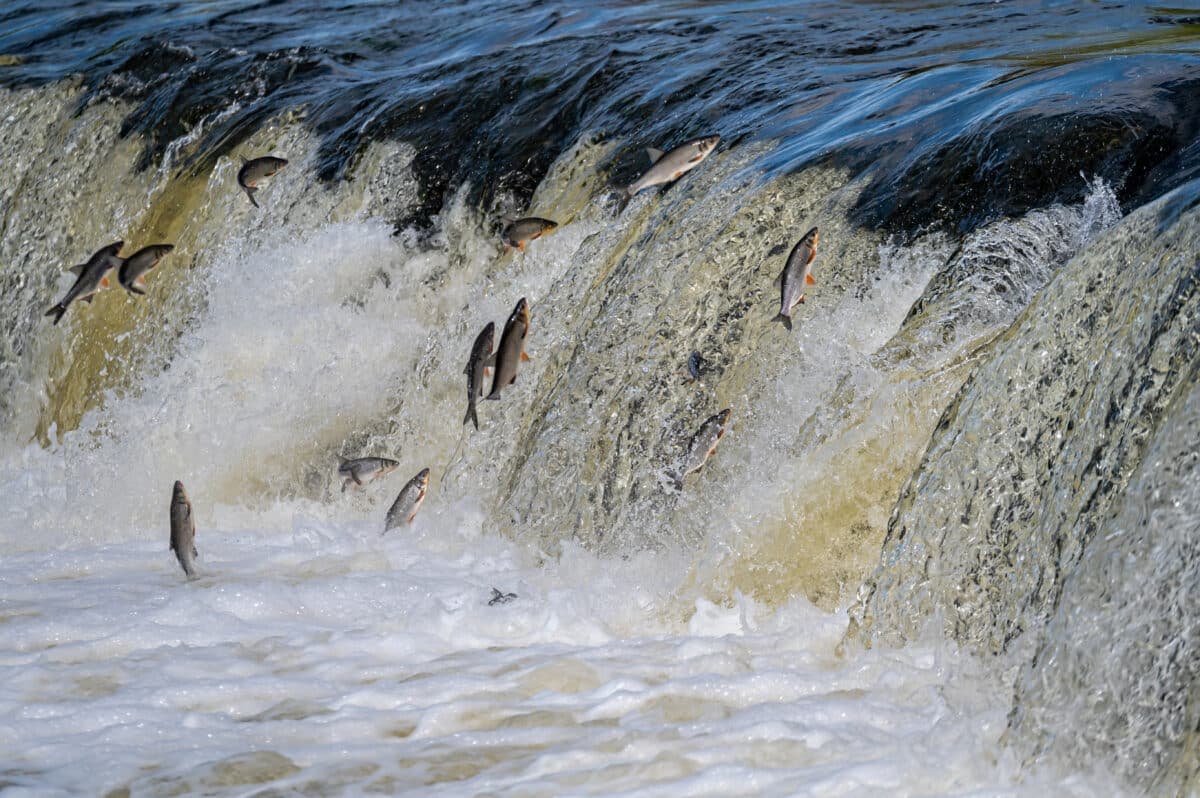Every year, the rivers and streams of North America witness a spectacular natural phenomenon – the migration of salmon. This awe-inspiring journey, fraught with challenges and perils, serves as a testament to the resilience and tenacity of these remarkable fish. In this article, we delve into the intricacies of the salmon migration, the constant threat they face from bears, and the underlying reasons for this epic journey.
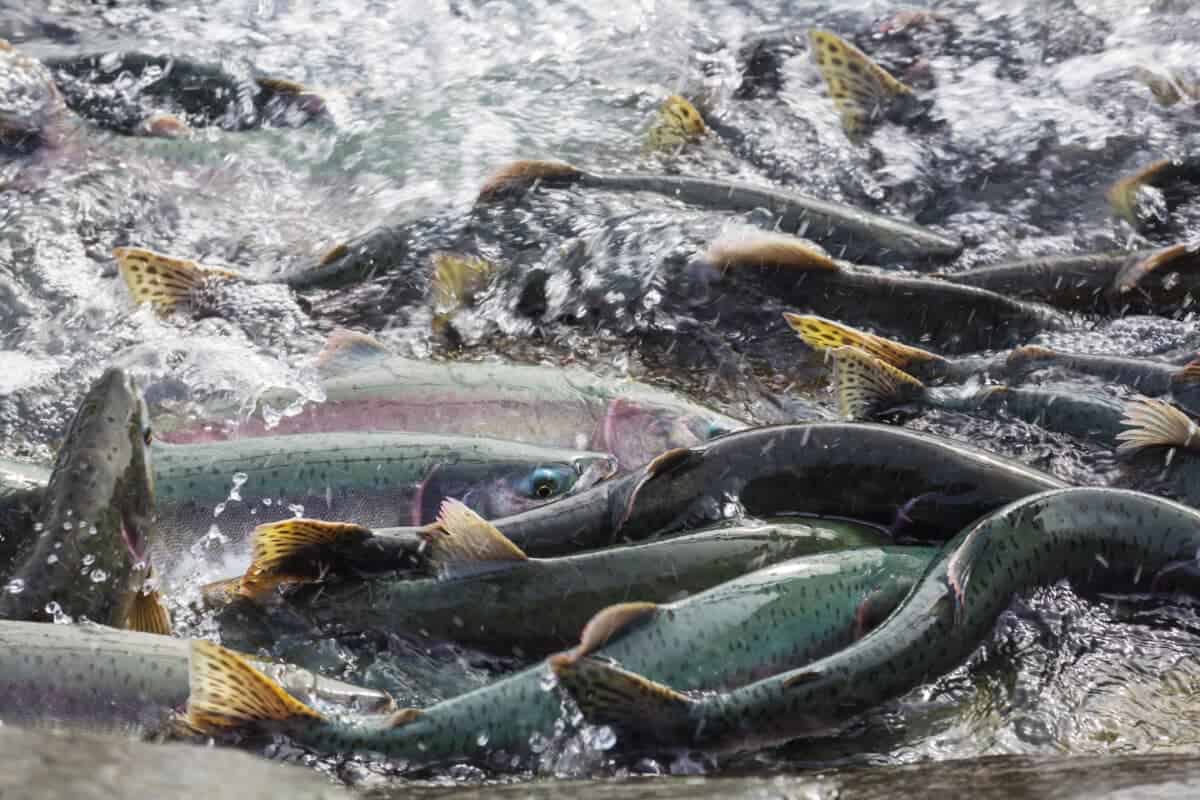
The Migration Route
Salmon embark on a long and arduous journey, navigating their way from the ocean back to their natal freshwater streams to spawn. This cyclical migration is a critical phase in the life cycle of various salmon species, including the iconic Pacific salmon. The journey takes them hundreds, and in some cases, thousands of miles, through a complex network of rivers and streams.
Bear Threats Along the Way
One of the most formidable challenges that salmon encounter during their migration is the presence of bears, particularly in the riverine habitats. Grizzly bears and black bears, well-aware of the annual salmon run, eagerly await the arrival of these nutrient-rich fish. Salmon serve as a vital food source for bears, offering a high-energy meal crucial for their survival, especially as they prepare for the upcoming winter hibernation.
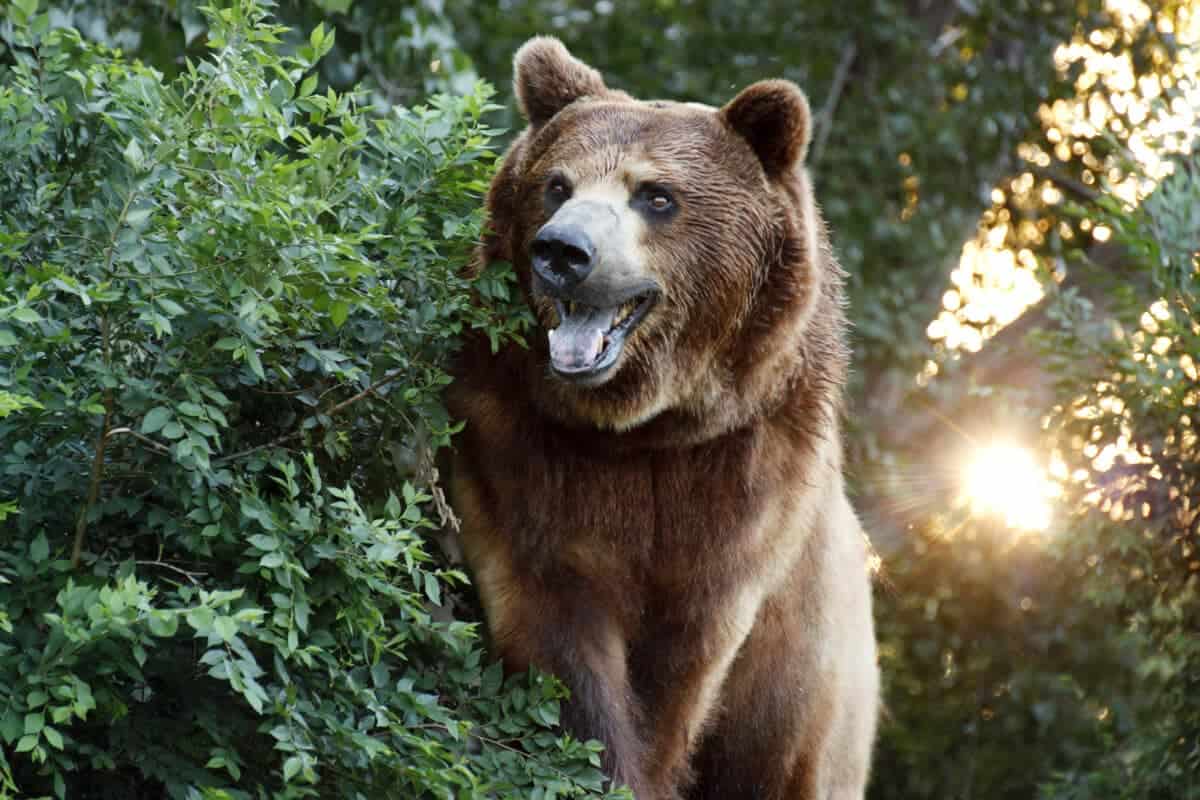
The salmon-bear interaction is a dramatic display of nature’s balance. As salmon navigate upstream, bears are quick to seize the opportunity. They employ various fishing techniques, from patiently waiting near the water’s edge to skillfully catching leaping salmon mid-air. The sheer volume of salmon during the migration provides a feast for bears, contributing to their overall health and chances of survival in the harsh winter months.
The Circle of Life
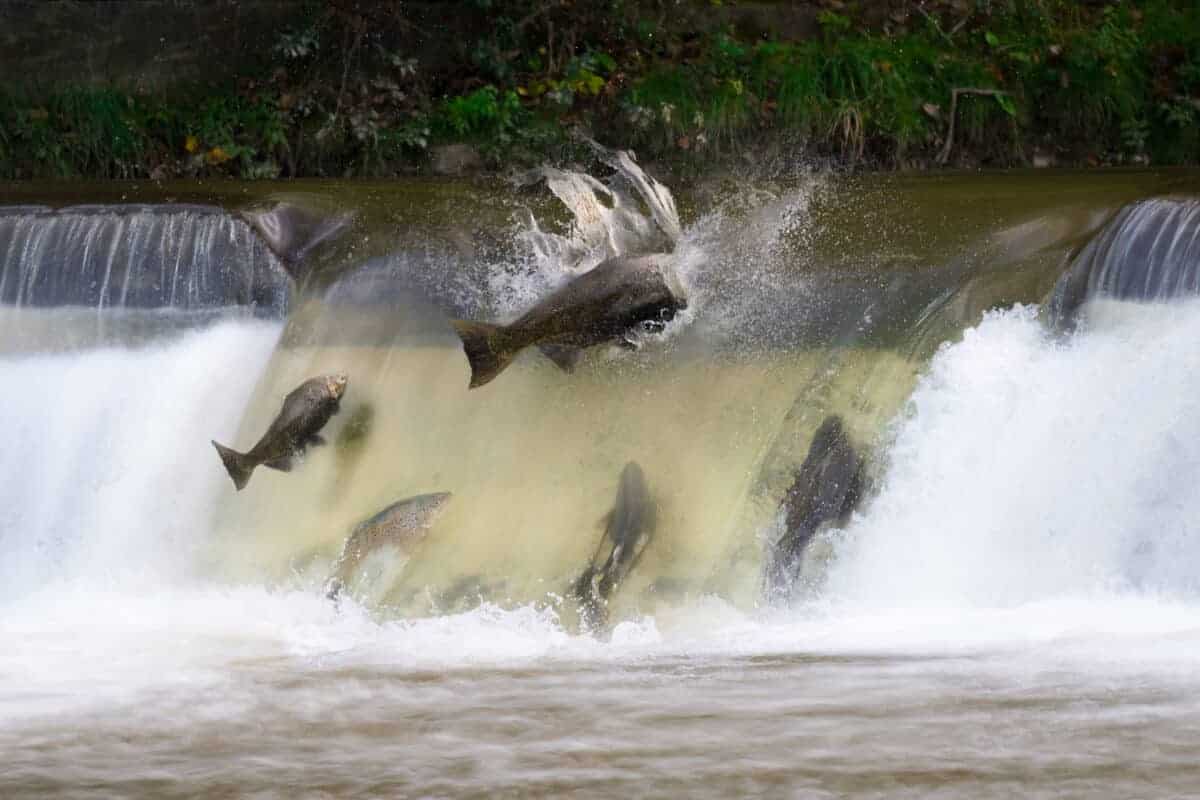
While the threat of bears is significant, it is an integral part of the natural cycle that benefits both species and the ecosystem at large. The bears’ predation on salmon not only sustains their populations but also redistributes vital nutrients from the ocean to the forest ecosystem. The remains of salmon carcasses left by bears serve as a crucial fertilizer for the surrounding flora, promoting the growth of plants and supporting a diverse array of wildlife.
Why the Migration?
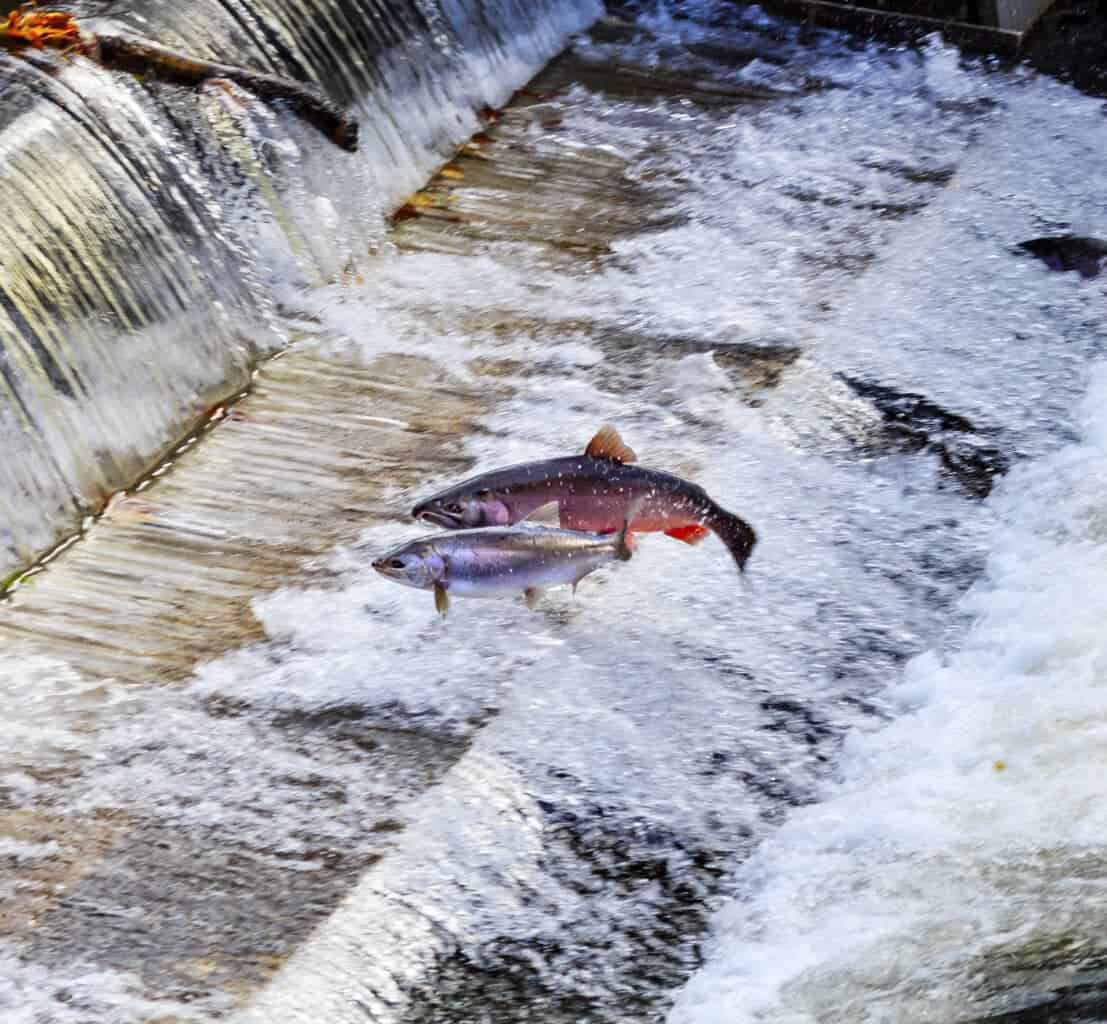
The primary motivation behind their epic migration lies in their reproductive strategy. Salmon are anadromous, meaning they are born in freshwater, migrate to the ocean to mature, and return to freshwater to spawn. The journey back to their natal streams is an instinctual behavior deeply ingrained in their biology. Once they reach their spawning grounds, female salmon lay their eggs in carefully crafted nests called redds, and males fertilize them. This cyclical migration ensures the continuation of their species, maintaining the delicate balance of aquatic ecosystems.
The migration of salmon is a marvel of nature, showcasing the intricate interconnectedness of species and ecosystems. Despite the challenges posed by bears, the salmon’s journey is a testament to their remarkable adaptability and the finely tuned ecological dance that unfolds annually. As we witness this awe-inspiring migration, we are reminded of the fragility and resilience of the natural world, where each species, no matter how small or large, plays a vital role in the grand tapestry of life.
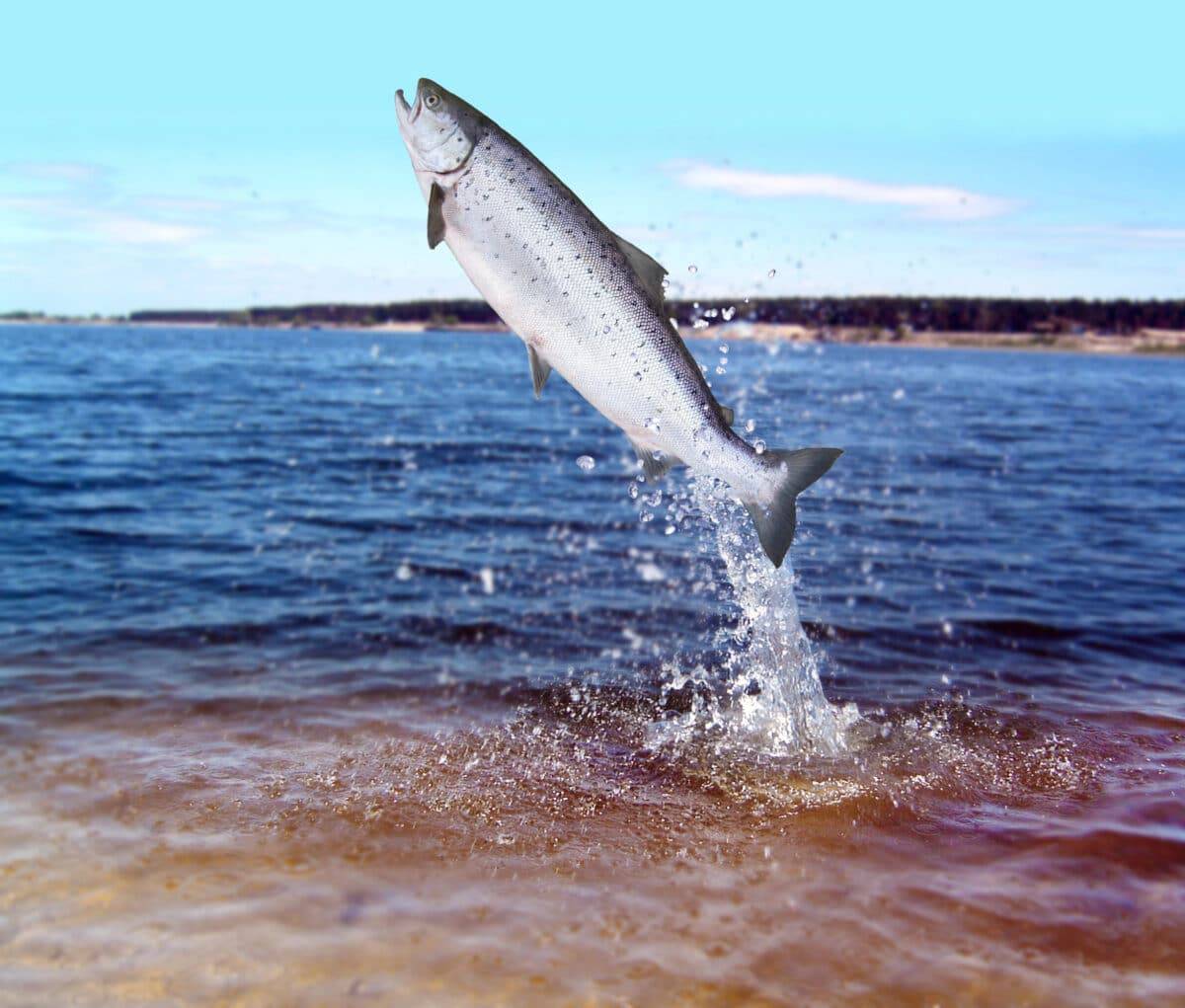
Join our Forum for free today!

- Second American Killed by Elephant in Zambia This Year - July 22, 2024
- Elderly Man Kills Grizzly Bear in Montana - July 22, 2024
- Missing Cat Found Weeks Later, 40 Miles Away - July 21, 2024

